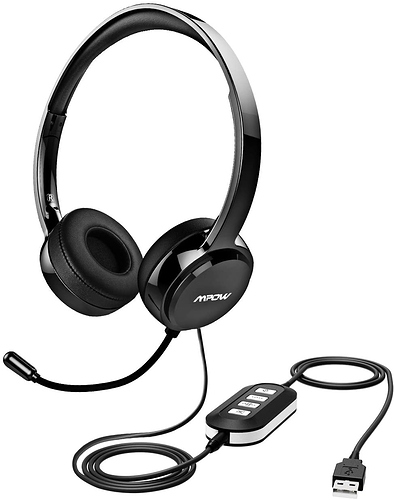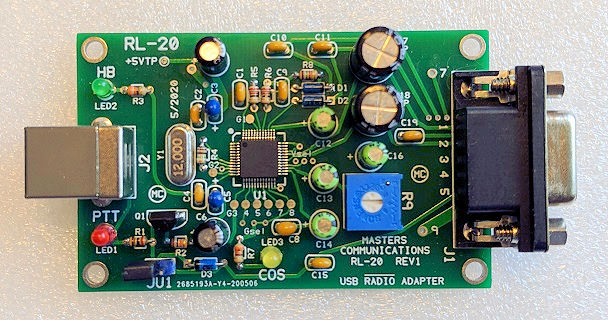Good evening,
Thought I’d share a pleasant little discovery I made this afternoon…it dawned on me that one or more USB headsets roaming about in the wild likely have CM108 or CM119 chipsets, and that with a little tinkering, one might just fit the bill for a radio-less setup. Having a seasoned career in VoIP (and with Asterisk, no less), I decided to rummage through my box of USB headsets, just to see what works. I had a few different Plantronics and Sennheiser models, a couple of Logitech models, and some other oddities…nothing panned out. Finally, I pulled out an old tried and true favorite, the Mpow 071.
The Mpow 071 is a budget headset, and runs anywhere from $25-$35 USD (pending on where you go to find one), but it has some cushy ear pads with integrated volume controls and decent audio response. It’s related to the Mpow 224, which is the slightly bigger brother with a little larger earphones. Both of which are reputable headsets for the money; they have good audio fidelity and a little noise cancelling.
I plugged the 071 in to a Raspberry Pi 3B+, fiddled with SimpleUSB configuration, set audio levels, set rxboost to true, and had an audio path if I manually keyed COR in the SimpleUSB menu. Now, to simulate PTT…hmm…what to do? Well, as luck would have it, I decided to press the buttons on the integrated audio controls to find the volume down (-) simulates COR logic if held in, so long as usbinvert is set to true. So, there you have it, a headset with PTT…success!
Audio levels seem OK if you have decent hearing; if you have difficulty, maxing out the range won’t get you incredibly far, but it should fit the bill for most people. Otherwise, with just a Raspberry Pi and Mpow 071, you can take this setup on the go. DTMF command shortcomings can be solved using AllMon or entering commands across the Asterisk CLI if you have a computer nearby. While this may not be the most graceful or robust option, it’s certainly an inexpensive one that requires no hardware modifications and can come in incredibly handy if you stay tethered to one node regularly.
Happy hamming,
John, AI3I

